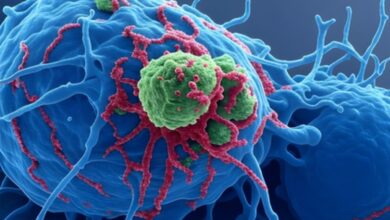Causes and treatment of foot cramp

Foot cramps are a type of muscle cramp that occurs most often either in the arch of the foot, near the toes, or on the upper part of the foot. People can try a range of remedies and treatments to relieve foot cramps.Muscle cramps are the involuntary contractions of a muscle. These spasms can occur during daily activities or wake a person in the middle of the night, reports Medial News Today.Like other muscle cramps, foot cramps can cause mild-to-intense pain until the muscle relaxes and the cramping ends.
A gentle massage or stretching exercises can often help the muscle return to a relaxed state.Foot cramps are a common occurrence and rarely a cause of concern. People who have frequent or chronic foot cramps can speak to their doctor about their symptoms.There are many potential causes of this condition. In this article, we discuss the common causes of foot cramps as well as how to prevent and treat them.Most of the causes of foot cramps are harmless and temporary.
These muscle cramps are often easy to treat and prevent. The following sections list the most likely causes of foot cramps.Potassium is an electrolyte that helps control functions that are vital to muscle movement and maintenance. When potassium levels dip too low, a person may experience cramping in the feet and legs.
If a person’s potassium levels are frequently low, they may have a potassium deficiency, which doctors call hypokalemia.In moderate-to-severe cases of hypokalemia, a person may experience cramping, fatigue and weakness, abnormal heartbeat and constipation.A doctor can diagnose hypokalemia by testing potassium levels in the blood and urine.People at all fitness levels, from beginners to top athletes, can experience muscle cramps if they push their muscles too far compared with their usual activity levels.
According to a 2019 article, exercise-related muscle cramps are the condition that most commonly requires medical attention when people participate in sports.If a person exerts themselves too forcefully during their workout or sports practice, overworked muscles can spasm more and cause foot cramps.When a person becomes dehydrated, their body lacks the necessary amount of water to help the tissues and organs function correctly. Dehydration can lead to muscle cramping throughout the body, including the feet.
Dehydration can occur for several different reasons, including diarrhea, vomiting, not drinking enough water, exercise and overheatingSome people may not realize that they are not drinking enough water. If any of the following symptoms occur, a person may be dehydrated and require treatment such as chills, dry mouth, craving sweets, skin drying out, fever, concentrated urine, which will appear darker than usual, chapped lips, headaches, bad breath and lack of urination When a person’s shoes are too tight, they can reduce blood circulation to the foot.
When blood is no longer circulating as it should, the muscles in the foot can cramp.Signs that a person’s footwear is too tight include the feet starting to feel numb, an inability to wiggle the toes in the shoes, an uncomfortable rubbing against the heels or toes and the shoes leaving indentations in the feet.
By replacing their restrictive footwear with well-fitted shoes, people can prevent circulation problems.Several types of medication can cause muscle cramping as a side effect. These include asthma medication, statin drugs, neostigmine, (Prostigmin), medications for Parkinson’s disease, osteoporosis drugs, medicines for Alzheimer’s disease, diuretics and blood pressure medication.
However, not everyone will experience muscle cramps after taking these medications.Nerve damage does not cause cramping. However, the pain and discomfort that it causes in parts of the body can feel like cramping.It is possible that a person will feel the effects of nerve damage in their feet.People with diabetesare particularly prone to nerve damage in this part of the body.
People may also experience nerve damage if they have had exposure to toxins, certain genetic disorders, metabolic issues, had an injury in or near their foot and been taking certain drugs to treat cancer.





